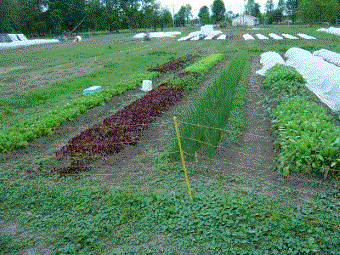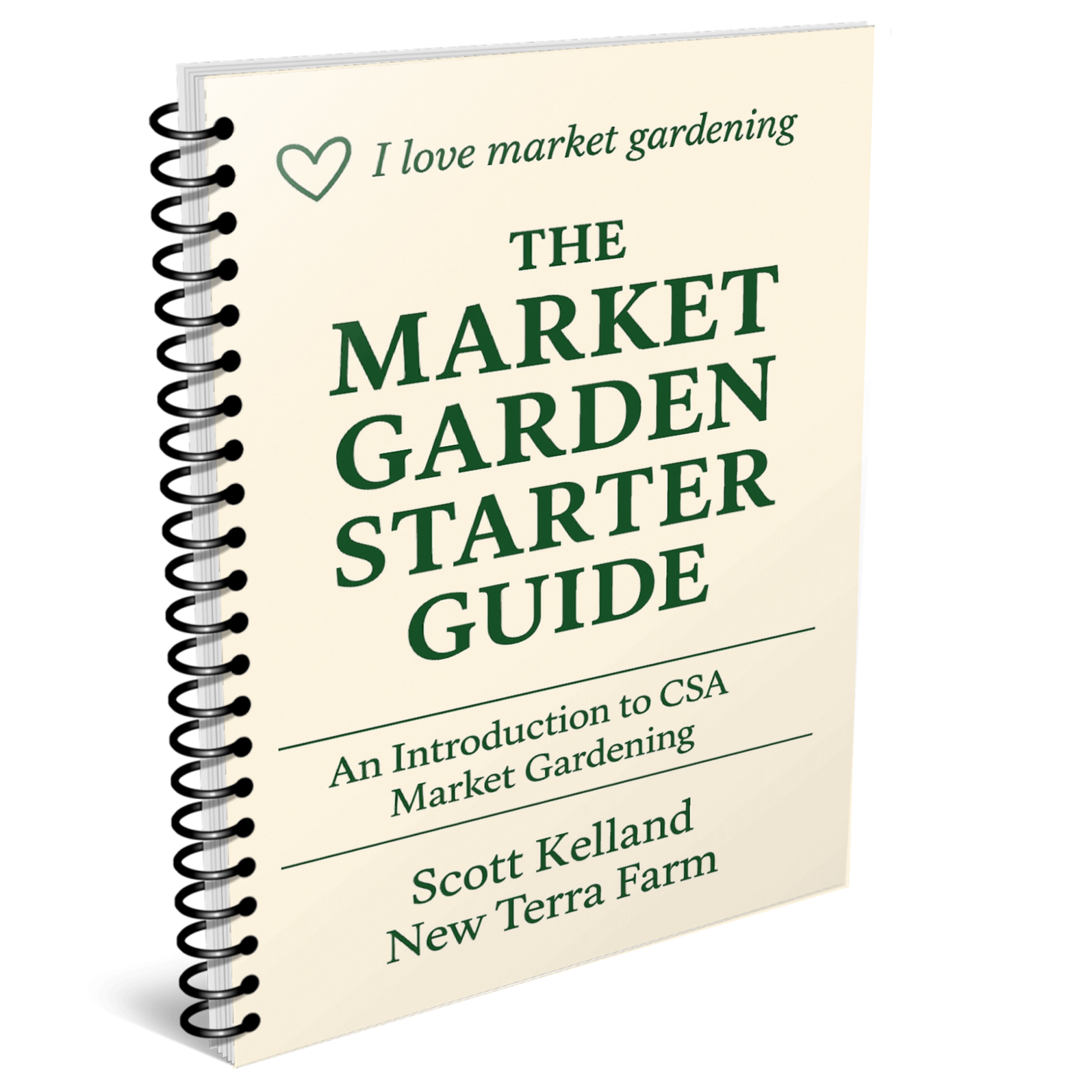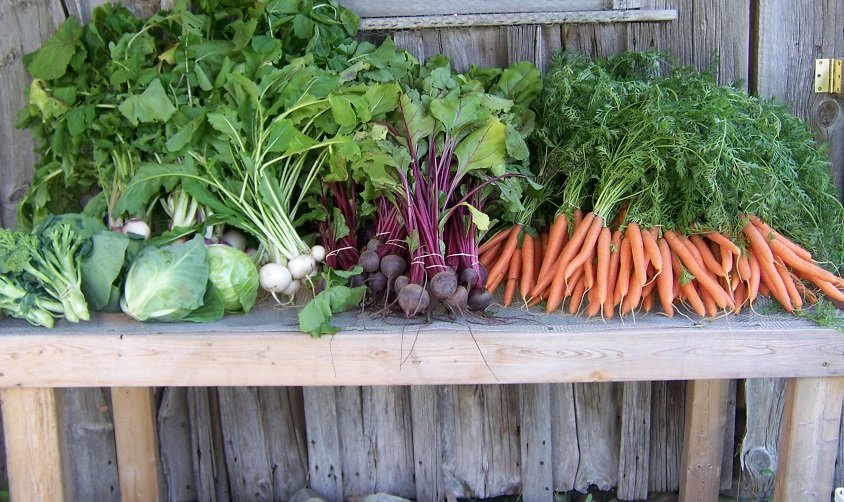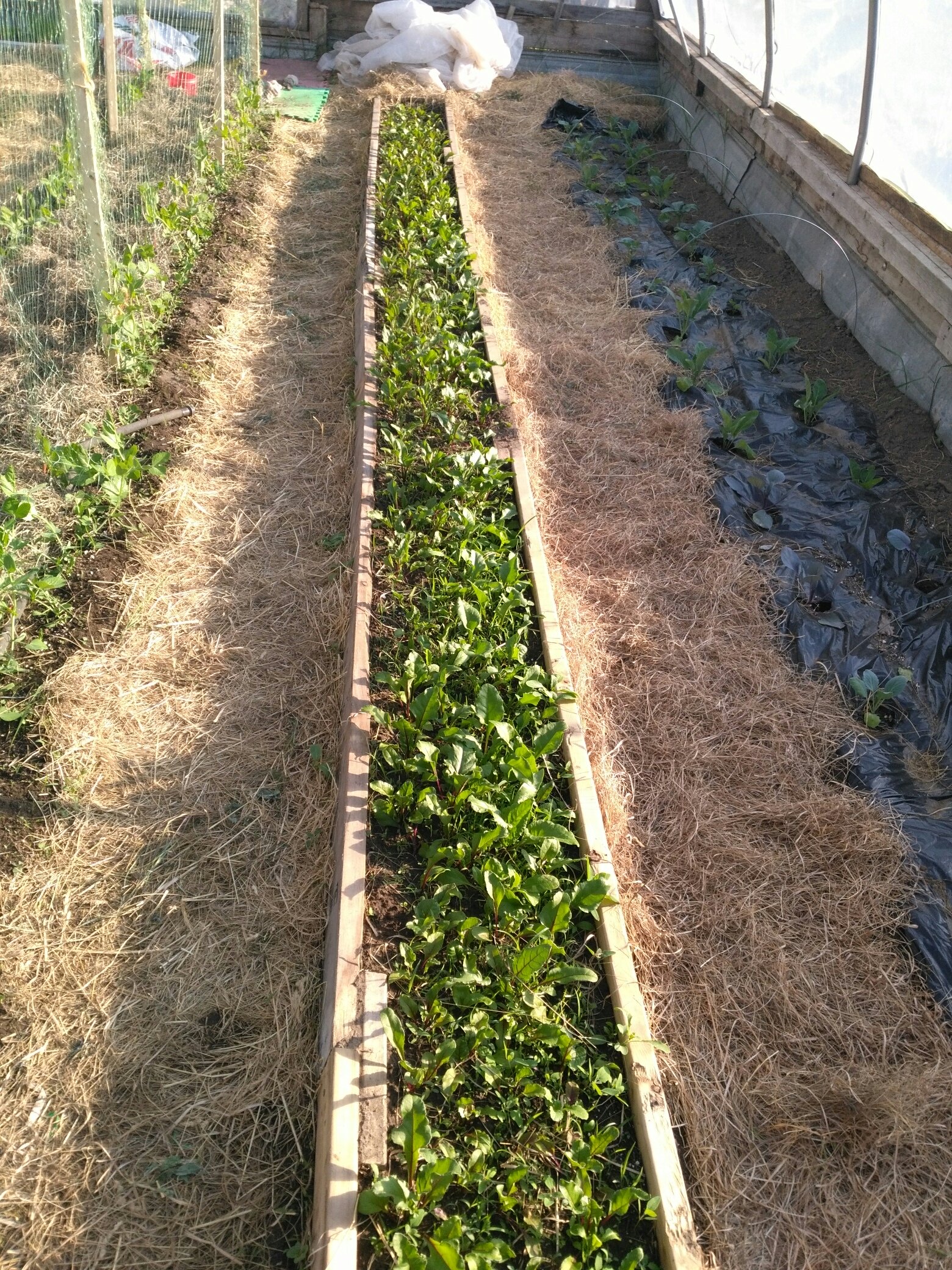Growing a High Income Market Garden My market garden laid out for efficiency and productivity My market garden laid out for efficiency and productivityGrowing a high income market garden is within the reach of most growers. It's possible to gross $40,000 or more from a one-acre garden, but achieving this revenue depends on careful crop selection, good marketing, and efficient work methods. And, your market garden can be even smaller and still yield a good income. If you have a small plot of land check out Backyard Garden Profits for some practical guidance. Planning assumptions for the high income market gardenFirst, its not what you make, its what you keep. In other words net income is more important than gross income. For example, green salad mix (mesclun) is a high-value crop on a per square foot basis, but the cost to pick and clean and dry it before packaging is also high. Be aware of the labour cost of your crops - even if you are doing all the picking yourself.
Finally, be aware of local conditions and preferences. Popular crops in your area may not be on this list, so check out some local markets to see what's selling. Get Your Free Market Garden Guide The consumer demand for fresh local organic food has never been higher. Bad news on the supply chain is good news for local growers. Get my free Organic Market Gardener Start-up Guide and see if this is the right time to launch your CSA market garden business. Enter your email to get instant access to the Guide. Crop selection for the high income market garden I love my garden! I love my garden!Here's what I have been growing in my high income market garden, with a rationale for each crop. This selection is appropriate for my location and resources. If I was starting from scratch to plan a high income market garden, some of my choices would be different. Check out my latest Special Report 'Grow the Top Ten Most Profitable Vegetables' to see other options. But they are time consuming to harvest. Picking a pound of tomatoes takes 5 seconds; a pound of beans, 5 minutes. They are popular, so grow some, but be aware of the cost. You won't make a lot of profit on beans
And digging a few hundred (or thousand) feet of potatoes by hand may be more exercise than you want. If you want to grow potatoes for your customers grow some specialty 'fingerling' types.
I do devote a little greenhouse space to an early crop of carrots and beets, here's why. All the root crops require diligent weeding and thinning to produce good-sized roots. They also all have the potential to stretch the season. I would recommend devoting some garden space to the first three; I wouldn't grow rutabaga unless you had customers that specifically ask for it.  Big bed of early beets in my greenhouse Big bed of early beets in my greenhouseIf you want to grow cole crops, stick to cabbage and broccoli – cauliflower is finicky, and more easily damaged by weather and bugs than the others. Leave it out of your high income market garden. Be aware that I absolutely cannot grow broccoli or cabbage without row cover;
the bugs just love these crops. This adds to the labour cost. Some of
the more unusual cabbages command a higher price (Tall Michilhli is a
favorite of mine)
But as a sideline, growing a few hundred bedding plants alongside your other plants can bring a nice early cash flow to your garden. You can read more about How to start a backyard nursery here Laying out your high income market gardenSo to wrap it all up, what would your high-income market garden look like? Here's an idea of the space to allocate for each crop, based on profit, popularity, and growing room needed.
Two final notes about the above: 1 - I didn't allocate garden space to the bedding plants; they will be mostly grown in your greenhouse.
2 - this is not a prescription; consider this list of plants just a starting place for your own research and planning to build your own high income market garden. Resources for 'High Income Market Garden'Chapter 9 - 7 Cash Cow Crops: The Self-Sufficient Backyard When I was researching for my Bootstrap Market Gardening Course, I discovered that CSA market gardens typically yield the highest net income of all small farms. Even in a cold climate extending the garden season beyond what most people think is possible is very feasible. And you can do this without breaking the bank. Learn more about this in The 52-Week Harvest 7 Farm Side Hustles that can increase your farm income. Build a Lean-To Greenhouse to start your plants and keep them thriving. Instructions to build a lean-to just like the first one I built at New Terra Farm. Check out my list of essential micro-farm equipment What does it take to start your own CSA market garden? I put together this Get-Started Checklist to give you an idea to the timing and the tasks if you want to start growing for market Market gardeners need customers; customers come from effective marketing. Here's the Secret Marketing Weapon that built us TWO successful work from home businesses. If you are thinking about market farming as a career, here's a few points to consider before you take the leap. A market gardening business plan is absolutely necessary, if you are seriously thinking about making money from your garden. Here's what is in the New Terra Farm plan We've said before that market gardening is as much about 'marketing' as 'gardening'. Here’s some valuable information about promoting your bootstrap market garden (or any farm business). Here's a great FREE resource for the small grower. Sustainable Agriculture Research and Education.
|
See Something You Like? Share!
Got questions to ask, stories to tell?
Share your organic market gardening question, or comment, or story.
I'm an affiliate for some products I promote on this site. This means I get a small commission for a product you buy through a link on one of my pages. This doesn't cost the buyer anything, but provides me an additional income to help support these pages.
Recent Articles
-
Learn how much to feed chickens before you bring your birdies home
Nov 02, 25 10:36 AM
You've ordered your birdies, now make sure you understand how much to feed chickens fo a healthy and happy flock -
How to start a CSA farm business
Nov 02, 25 06:33 AM
How to Start a CSA Farm Business (and Actually Make Money Doing It) -
A Layered Food Storage Plan for Emergency Preparedness
Oct 29, 25 09:48 AM
Build a smart, layered food storage plan for emergencies, prepping, and long-term survival. Discover how to stockpile food the right way for every situation


